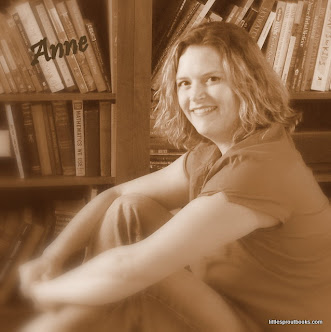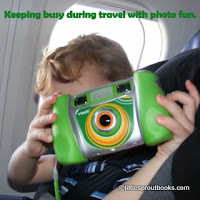Tackling Fears
 My oldest, B, had his fourth birthday recently (which is why my posts have been a little neglected – sorry friends!) He has decided that a 4-year-old is a grown-up-boy and he is not a “little boy” anymore. In fact, while interviewing him in his birthday journal
My oldest, B, had his fourth birthday recently (which is why my posts have been a little neglected – sorry friends!) He has decided that a 4-year-old is a grown-up-boy and he is not a “little boy” anymore. In fact, while interviewing him in his birthday journal  (found it browsing Amazon – I’ll be posting about it once I get his b-day photos up), I asked him what he is scared by, and his response was, “I’m brave.” While I love that he feels that way about himself, it’s not exactly true… My little guy is troubled by noisy places, dogs, and dark rooms. The latter is one we’re working on a lot; I don’t argue that the dark can be scary, but I’d like him to realize he’s capable of turning on the light and making himself feel better, rather than winding himself up into a nervous tizzy. It would be ever-so-helpful if he could be a little braver about walking down a darkish hallway (in our own house) to the bathroom while I’ve got my hands full with dinner, baby, etc.
(found it browsing Amazon – I’ll be posting about it once I get his b-day photos up), I asked him what he is scared by, and his response was, “I’m brave.” While I love that he feels that way about himself, it’s not exactly true… My little guy is troubled by noisy places, dogs, and dark rooms. The latter is one we’re working on a lot; I don’t argue that the dark can be scary, but I’d like him to realize he’s capable of turning on the light and making himself feel better, rather than winding himself up into a nervous tizzy. It would be ever-so-helpful if he could be a little braver about walking down a darkish hallway (in our own house) to the bathroom while I’ve got my hands full with dinner, baby, etc.
A Hazardous Imagination
One of the most entertaining cognitive developments in the preschool age range is the ability to engage in fantasy play. Unfortunately, the ability to distinguish fantasy from reality usually comes along a little later. Once, B was pretending to be visiting an aquarium. We were just sitting down to dinner and I asked him to join us. He responded that he couldn’t get to the table unless I made a hole for him to pass through from the aquarium. I pretended to cut and open a door, and as I did so, a wave of panic washed over his face. He went scurrying into the kitchen, where he cowered in tears. He seemed genuinely afraid, and told me he ran away because when I opened the door I let sharks out all over our house! With some comforting and assurances, we did make it to the dinner table, but I learned a lesson in the power of imagination. A parallel social-emotional development is the perception of the unfamiliar as potentially scary. There are certainly benefits to this development – a healthy dose of fear of the unfamiliar is protective. Dark makes most anything unfamiliar because we are less able to visualize our surroundings, so dark becomes scary.

As I said, we’ve been working on reaching for the light switch without panic. Other strategies have included keeping a flashlight by the bed, nightlights in the bedroom and bathroom, glow stars on the ceiling, leaving the light on in the fish tank, and even glow in the dark pajamas! Of course my favorite tool is a good book.
Reading Our Way to Bravery

 There are lots of books dealing with fears, particularly of the dark, and many geared especially to bedtime (when dark fears crop up most). I am especially fond of Switch On the Night, by Ray Bradbury, because it puts the power in your child’s hands to not only conquer the fear, but learn to appreciate the dark. The book begins with an introduction to a little boy who does not like night. He combats the dark with “lanterns and lamps and flashlights and candles and chandeliers,” and he never leaves his house at night. One night he is visited by a little girl called Dark who notices he is lonely because all the other children are playing outside. Dark explains that the switches the little boy is afraid of don’t turn off the lights, they switch on the night. She also introduces him to some of the more enjoyable night features he can switch on, like crickets, frogs, the stars, and the moon! The illustrations are detailed pencil drawings that beg to be studied, and they really make the night seem magical. By the end of the book, the boy has thrown away all his lights and can be found out on a summer night playing with the other children. We originally checked this one out from the library, but I liked it so much I ordered our own copy so that we can pull it out one in a while when we need a reminder that the dark is not necessarily scary.
There are lots of books dealing with fears, particularly of the dark, and many geared especially to bedtime (when dark fears crop up most). I am especially fond of Switch On the Night, by Ray Bradbury, because it puts the power in your child’s hands to not only conquer the fear, but learn to appreciate the dark. The book begins with an introduction to a little boy who does not like night. He combats the dark with “lanterns and lamps and flashlights and candles and chandeliers,” and he never leaves his house at night. One night he is visited by a little girl called Dark who notices he is lonely because all the other children are playing outside. Dark explains that the switches the little boy is afraid of don’t turn off the lights, they switch on the night. She also introduces him to some of the more enjoyable night features he can switch on, like crickets, frogs, the stars, and the moon! The illustrations are detailed pencil drawings that beg to be studied, and they really make the night seem magical. By the end of the book, the boy has thrown away all his lights and can be found out on a summer night playing with the other children. We originally checked this one out from the library, but I liked it so much I ordered our own copy so that we can pull it out one in a while when we need a reminder that the dark is not necessarily scary.
Appropriate for (some) toddlers, preschoolers, primary grades.
Linked up with:
What My Child Is Reading
Tackle It Tuesday
Read more...























.jpg)
.jpg)
-1.jpg)























